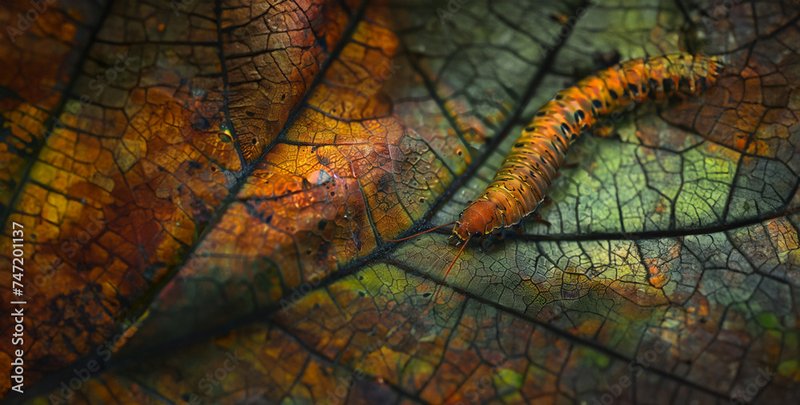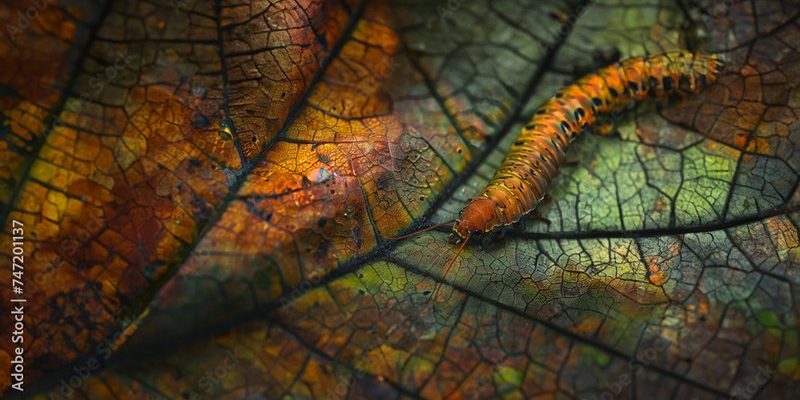
Inchworms, which are actually the larvae of certain moths, move in a very distinctive way. Their movement pattern resembles a slow, rhythmic “inching” that many find captivating. It’s a bit like watching a piece of string being pulled by an invisible force. So, why do they move this way? Well, let’s dig deeper into the world of inchworms and uncover the secrets behind their unique locomotion.
Understanding Inchworm Movement
Inchworms have a remarkable ability to move in a way that looks almost like they’re measuring the ground they’re traversing—hence their name. They move by contracting their bodies, which allows them to create a loop with their body. Here’s how it works: their front end stretches forward, then they pull their back end up to meet it. This movement can be likened to a zipper closing or a wave rolling in and out.
This slow and deliberate motion serves several purposes. First, it helps them navigate their environment efficiently. Inchworms often move along branches and leaves, and this type of movement allows them to blend into their surroundings, making it harder for predators to spot them. You might be wondering how they avoid being eaten, and their stealthy inching certainly plays a part in that.
Another important aspect of their movement is related to their survival strategy. Inchworms often mimic twigs or other plant material when resting, which means that their unique movement makes it easier for them to stay hidden. By making themselves appear as part of their environment, they reduce the risk of becoming a snack for birds and other predators.
How Inchworms Adapt Their Movement
Inchworms don’t just move in a straight line. They are masters of adaptation, adjusting their movement based on their surroundings. For instance, when they encounter an obstacle like a leaf or a branch, they can change direction seamlessly. This ability to navigate complex environments effectively is crucial for their survival.
They also use their unique movement pattern to get to food sources. Inchworms primarily feed on leaves, and their inching movement allows them to reach different parts of a plant without causing significant damage. Instead of munching haphazardly, they can carefully maneuver to the tastiest leaves, ensuring they get the nutrients they need to grow.
It’s fascinating how inchworms have evolved to use their movement not just for locomotion but for survival as well. Their method of inching allows them to be both efficient and discreet, making them well-suited for life in the trees and shrubs.
The Anatomy Behind Inchworm Movement
The way inchworms move is also tied to their anatomy. Their bodies are soft and flexible, allowing them to bend and twist in ways that help them inch along. Most inchworms have a long, cylindrical shape with a few distinct body segments. This segmented structure is crucial as it allows them to contract and expand their bodies efficiently.
In addition to their body structure, inchworms have tiny hooks called prolegs on their rear end. These help them grip surfaces as they pull their bodies forward. Think of them like the “sticky” part of a Velcro strip. When inching, they use these prolegs to anchor themselves temporarily before moving the front half of their bodies. It’s this combination of anatomy and movement technique that makes inchworms such unique little creatures.
Moreover, their body structure isn’t just about movement; it also plays a critical role in their survival. When threatened, some inchworms will mimic the shape of a twig or leaf, becoming almost invisible against the backdrop of their environment. This clever adaptation highlights the interplay between their anatomy and movement, making them interesting subjects of study in the insect world.
The Role of Weather and Environment on Movement
Just like us, inchworms are influenced by their surroundings, especially the weather. Humidity and temperature can affect how they move. On damp days, they might inch along more easily, while hot, dry conditions can make their movement sluggish. You can almost picture them dragging their bodies across the parched ground, wishing for a cool breeze.
In addition, light plays a significant role in their movement. During the day, inchworms are more cautious, inching slowly to avoid detection by predators. At night, however, they may be bolder, taking advantage of the cover of darkness to move freely while searching for food.
The environment also shapes their movement. In a dense forest, inchworms might have to navigate around branches, leaves, and other obstacles. In contrast, on a more open path, they can move quickly, covering ground more effectively. You might even think of them as little explorers, constantly adjusting their movements to adapt to changing landscapes.
The Importance of Inchworms in Ecosystems
Inchworms might seem small and insignificant, but they play an important role in our ecosystems. As herbivores, they help regulate plant growth by munching on leaves. This feeding can encourage new growth and might even benefit other animals by creating more space for various plant species to thrive.
Moreover, inchworms serve as a food source for many creatures. Birds, small mammals, and other insects rely on these little guys as part of their diets. In essence, by supporting these populations, inchworms contribute to the balance of their environments.
If you think about it, every creature—no matter how small—plays a role in the web of life. Inchworms help maintain the health of plant ecosystems while also providing nourishment for larger animals. This interdependence is a beautiful reminder of how nature works together seamlessly.
Inchworms are truly remarkable creatures with their unique movement patterns and adaptations. From their stealthy inching to their critical roles in ecosystems, there’s so much more to these tiny larvae than meets the eye. Whether you’re watching them inch along a branch or learning how they adapt to their environment, it’s clear that they are a vital part of the natural world.
So next time you spot an inchworm, take a moment to appreciate its slow, deliberate dance. You might just find yourself fascinated by the intricate mechanics and purposes behind its movements. Inchworms remind us that even the smallest creatures can have a big impact on our planet. Isn’t nature fascinating?

